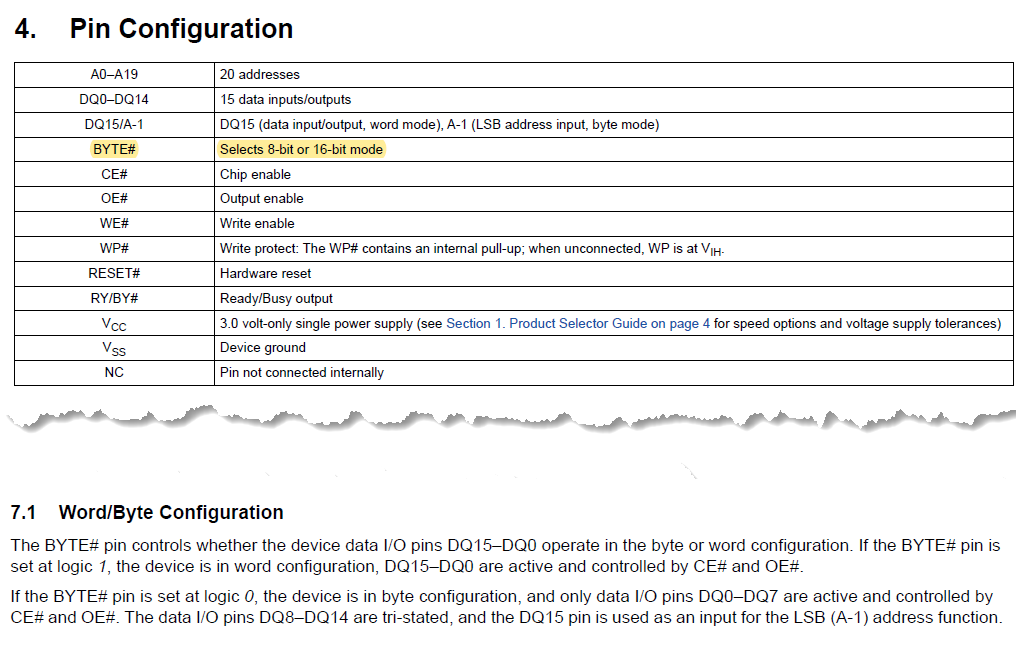Other Parts Discussed in Thread: TMS320F28379D, C2000WARE
Tool/software: Code Composer Studio
I have designed a board wiht TMS320F28379D and connect a flash S29AL016J70TFI020.My design is based on TI's official design C2000Ware_2_00_00_02\boards\TIDesigns\F28379D_EMIF_DC.
The connection of my design between DSP and Flash is the same as the design of TI's.
Now I have a question about the design. The picture below is part of the TI design of F28379D_EMIF_DC_SCH.pdf, the pin14 WP# and pin47 BYTE# which are marked by red circle seem to be left unconnected.And in my design,I also left these two pins unconnected as well.I'm wondering whether my understanding of these two pins' connection are correct.And the mode of the flash decided by pin BYTE# is byte or word?


